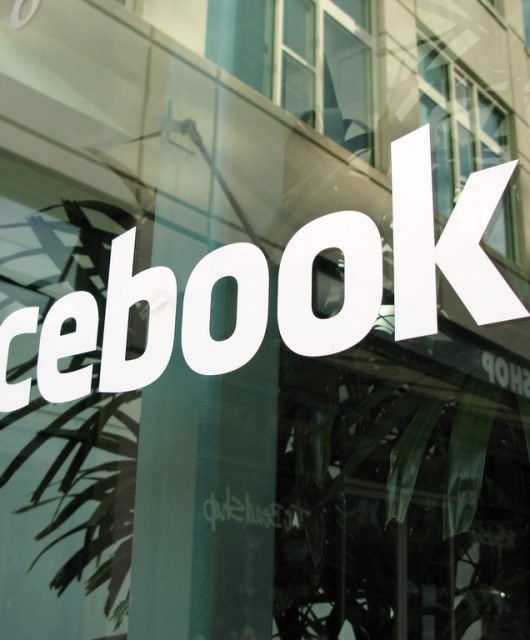How Should Brands Communicate In 2018: Q&A With Genesis Burson-Marsteller’s Nikhil Dey
Brand Communication is imperative to the sustainable success of any brand. In the current competitive landscape, brands must go beyond narrating a compelling story, they need to communicate in a way that inspires and engages. Having a solid and consistent brand communication strategy allows the brand to stand out, cut through the noise, build awareness and drive an emotional connection with the audience. The Berries interviewed Nikhil Dey, President of Genesis Burson-Marsteller, to get his two cents on how should brands communicate in 2018.
BB: Corporate communication used to be all about exposure and buzz via various media channels; With the rise of new communication concepts, brands find themselves with no choice but to adapt to change. From your opinion, what are the important new trends that corporate communication professionals should keep on their radar to lead in 2018 ?
 ND: I believe the phrase “new tools, new rules, same game” best sums up the current situation. The ask has not changed but the environment has. Buzz for the sake of buzz and wide exposure across channels is of no use unless it delivers on the brand challenge or opportunity.
ND: I believe the phrase “new tools, new rules, same game” best sums up the current situation. The ask has not changed but the environment has. Buzz for the sake of buzz and wide exposure across channels is of no use unless it delivers on the brand challenge or opportunity.
With this backdrop, there are three key trends that I believe will need to be taken note of to drive successful communications campaigns in 2018:
- Digital advocacy: Digital marketing that engages consumers is hygiene for companies today, but there is a need to go beyond that. Whether it is for online thought leadership on an issue that is critical for the growth of your company or industry, or for creating an ecosystem of advocates that will create the surround sound for your message as well as stand by you through thick and thin, digital advocacy is growing to be an imperative. In today’s crisis-prone environment, these online advocates are the currency of the future.
- The firefly effect:A firefly glows from within. Similarly, an organization today needs to glow from within—through its employees. The employees of an organization can become its brand ambassadors, there is no better communication than that. For that, employee engagement is important. Unfortunately, it’s a bit of a no-man’s land. Sometimes it sits with the talent function, sometimes with corporate communication and other times with the CEO’s office. There is merit in communicators taking ownership of this and bringing it all together.
- Less with less:So far, communications was about more with less. Today, it is about less with less. Resources continue to be at a premium, so the ‘less’ on that end remains. But it is a noisy, cluttered world and going all guns blazing with your message on every medium is no longer the best way to get it heard. It is far more effective to do few things, but do them really well, focusing on a specific target and strategy.
BB: The use of influencers has been one of the dominating highlights that gained momentum in 2017 with leaning on online influencers more than celebrity endorsements. How can the use of influencers for brands evolve in 2018 for a better ROI ?
ND: Influencer marketing has gained momentum for sure and every brand wants a piece of the pie. Whether it is fitness enthusiasts for wearable tech, make-up experts for cosmetics, doctors for wellness products or analysts for the corporate health of a company, the reason that influencers are in demand is simple—credibility. I trust them as a third party who has authority on a subject and their views help me make decisions.
However, the very thing that made influencers so much in demand has started to become their downfall. As more and more brands start engaging with them and commercial interests creep in, the credibility quotient diminishes and they just become another channel for driving awareness instead of ‘influence’.
The two solutions that present themselves is to find new influencers (who have not made everything about a monetization as yet) or build transparent, exclusive and authentic partnerships with the more established ones.
BB: Nowadays, Brands are all about designing engaging experiences. How can corporate communication professionals help brands narrate their stories and create an emotional attachment?
ND: There is nothing more powerful than ‘showing and telling’ which is one of the oldest tools in the communications game. The ability to use these experiences to reach a much larger audience than the one in the room is crucial. Harnessing technology to capture and distribute these experience to a wider audience is crucial. Live webcast, video capture for later distribution, leveraging influencers networks to create the ripple effect is the current flavor. However to help brands tell their stories and build an emotional appeal using this approach one has to keep the following in mind:
- a) UnusualContent b) Unscripted tonality and c) actions that are Unified to brand purpose.
Unusual Content: There is so much noise and clutter that in order to grab attention, a campaign has to be able to deliver unusual content or the usual content in an unusual manner. An evocative story in a video that touches a chord is far more impactful than, say, a press release or even an article. Brands in India, and indeed, across the world, are increasingly seeing the benefit of doing that. YouTube is replete with examples of impactful visual storytelling, whether it is a jewelry brand talking about the new-age woman, a tech company talking about how distances are bridged when you want them to, with technology opening doors, or even a tea brand talking about the need to be ‘woke’.
Unscripted tonality: It has got to look and feel authentic for people to believe in it. For example, brand placement in Bollywood movies has been on the rise for the last few years. But there’s a difference between placing a tough SUV in a movie about a road trip and placing a logo and a line of dialogue where it looks force-fitted.
Unified to brand purpose: Cool content that grabs attention is no good if it is not delivering business results for a brand. The linkage between a campaign thought and the execution has to be always front and centre of a communications professional’s mind. Sometimes, in the excitement of doing something creative or disruptive, the danger is that the brand does not benefit in the end because the idea has lost linkage with the brand purpose.
BB: For brands, fake news on social media is an existential threat. Do you think this will affect the level of online brand engagement on social media platforms ? In times of fake news, should brands remain silent, refute news or generate content in a different direction ? Please elaborate
ND: All the principles of crisis management come into play when dealing with fake news. Just because it is an imaginary problem does not make it any less dangerous for the brand. In fact, the opposite holds true. Brands tend to underestimate the impact and danger of fake news as compared to a real crisis.
The first thing a brand that is the victim of fake news needs to do is – Own the Problem (not the false narrative, but gap in communication that it may have missed) and then the second is the – Need for speed in responding. The strategic direction to be taken could vary depending on the situation. Sometimes one needs to harness third-party voices to weigh in. At other times, it’s simply about building a counter-narrative.
BB: One of the historical industry debates has revolved around whether doing PR in-house or hiring a professional corporate communication agency. Can you mention some differentiators that would encourage brands do PR with a firm instead of doing it in- house ?
ND: I have never quite understood the distinction that is made between in-house professionals and agency professionals. I have been on both the sides. Interestingly, what I have brought to the table has been the same. The answer I believe is simply to harness the best talent for the brand’s need. If that talent can be housed within, great. If not, given the multiplicity of skills that need to come together to deliver great brand campaigns, tapping into an agency is often the answer. For example, during a crisis, being able to leverage a wider skill-set is an obvious benefit. Even during peace time, say internal communications and employee engagement is a big ask, and an in-house team does not have expertise, then again, it could be a great partnership to build with an external partner. At other times, it’s about geographical reach, which an agency may be able to provide. Whatever permutation and combination you look at, the best work gets done by a collaborative team of experts who are able to perform together behind a common purpose.
BB: Corporate communication pros who work in the digital sphere are often faced with an all-time dilemma, Content Virality Vs Paid tools. How can they constantly find new content niches, social communities and influencers, organically ?
ND: The earned, owned, shared and paid framework is here to stay. The optimal leverage of each is not in watertight compartments anymore. So, to say that corporate communications need to find new earned avenues to stay relevant, I believe, is missing the point. In a crisis, sometimes the best strategy is to deliver content through channels other than the earned in the first instance to ensure the message lands as intended. That said, keeping one’s eyes and ears tuned for channels that have not become mainstream is also an integral part of what needs to be done. Radio, for instance, is under-leveraged by the corporate communications fraternity in India. Community radio is an interesting area to explore for earned storytelling. Similarly LinkedIn has great potential if one is trying to build an employer brand.





